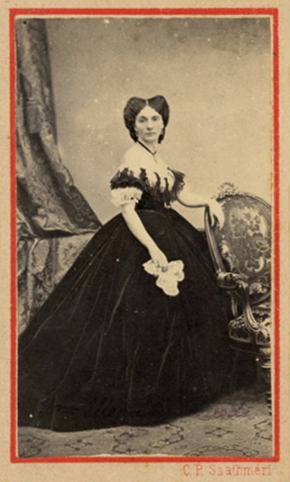
Elena Cuza, photograph made in the studio of
Carol Popp de Szathmári
Elena Cuza, the wife of Alexandru Ioan Cuza, the ruler of the 1859 Union between Moldova and Wallachia, was a discreet presence, whose actions became a landmark in philanthropy, medical assistance development, as well as in supporting education and culture. At that time her example had generated other similar initiatives either in public administration or in the private sector.
Elena Cuza was born on 17 June 1825 in Iaşi. Her father was Iordache Rosetti, a high-ranking boyar, and her mother was Catinca Sturdza, coming from another great boyar family. She received a good, but strict education. In the same spirit was raised her younger brother, Theodor Rosetti (1837-1923), jurist, one of the founders of the “Junimea” movement, minister, prime-minister (1888-1895), governor of the National Bank of Romania (1890-1895) and honorary member of the Romanian Academy (1891).
Elena spent the first years of her childhood on her family’s estates of Soleşti and Miclăuşeni. Then she moved to Iaşi where she met Alexandru Ioan Cuza whom she married in April 1944. Once Cuza was elected Ruler in 1859, her new statute allowed her to get involved in helping those in need.
Her visit in July 1862 at civilian hospitals and at a small orphanage established by dr. Carol Davila had determined her to support the building of an institution providing shelter and education to abandoned and disadvantaged children. Due to her perseverance, made evident in the correspondence with N. Creţulescu, president of the Council of Ministers, on 18 July 1862 was issued the decree on the establishment of an asylum for whose construction Elena Cuza had donated “the sum of 1,000 gold coins from her own money”. On 29 July 1862, the ceremony laying the foundation stone of the institution that would bear the name “Lady Elena Asylum” took place in front of a numerous crowd, marking the first noteworthy humanitarian action in Romania. The event was celebrated by the issue in Paris of a series of anniversary medals of which only a few pieces are still preserved today. The gilded and silver-plated bronze medals with a diameter of 5 mm were realized under the supervision of the engraver Caqué.
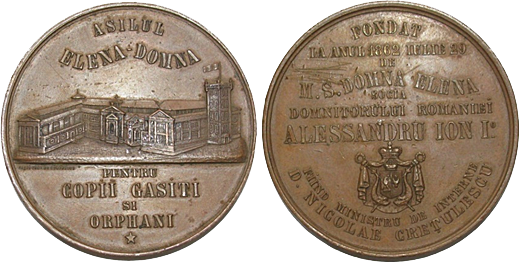
Medal of 1862 dedicated to the founding of the “Lady Elena Asylum” (gilded bronze)
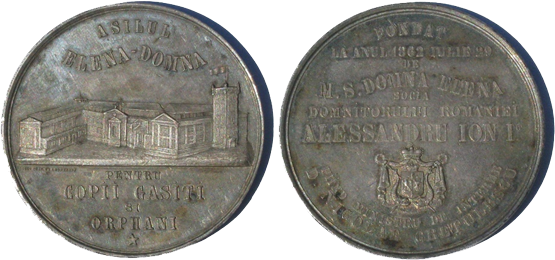
Medal of 1862 dedicated to the founding of the “Lady Elena Asylum” (silver-plated bronze)
During the ceremony, a brass box containing an anniversary medal, coins in circulation and the asylum’s founding act was placed at the building’s foundations. On that occasion, a public subscription was launched because the costs for building the charitable institution were very high. Elena Cuza donated 32,000 lei and was actively involved in raising the necessary funds. She even organized a raffle with things provided by many high-society ladies. The results of these actions were remarkable, and under her guidance the sum of 378,824 lei was collected covering the expenses for the right wing of the asylum. The institution started working in 1863 under the patronage of Elena Cuza. However, works to the building continued and a church was added later on.
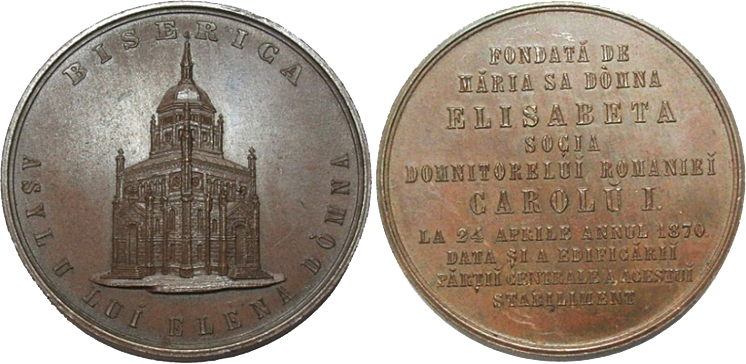
Medal of 1870 dedicated to the building of the central wing and of the church of the “Lady Elena Asylum”
The building of the “Lady Elena Asylum”, one of the most modern in the country, had four levels and central heating. The spaces included dormitories, a kitchen, a dining hall, bathrooms, lodging for the personnel, an infirmary, a pharmacy, and a school for 120 boarding students and 60 outside students. The asylum’s management and partial financing were ensured by the Civilian Hospitals Administration.
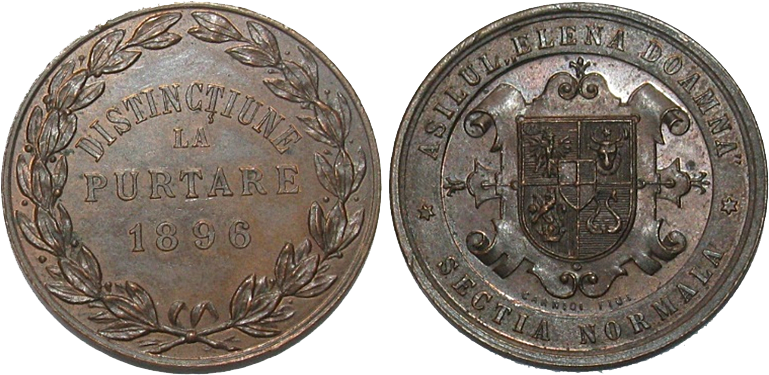
Medal “Recognition for behavior” awarded in 1866 by the “Lady Elena Asylum”, engraver Carniol Jr.
Elena Cuza continued her charity work even after 1866 when she was not the country’s first lady anymore. In 1880 she founded the Children’s Hospital “Caritatea” (Charity) in Iaşi in a building she had bought from her brother, Constantin Rosetti. Numerous of her charity acts and donations were mentioned in various documents. In a letter sent to doctor Serfioti in December 1894, Elena Cuza wrote that she would send the sum of 1,000 francs via the National Bank as annual donation to the Lady Elisabeta Hospital-Caritatea in Galaţi.
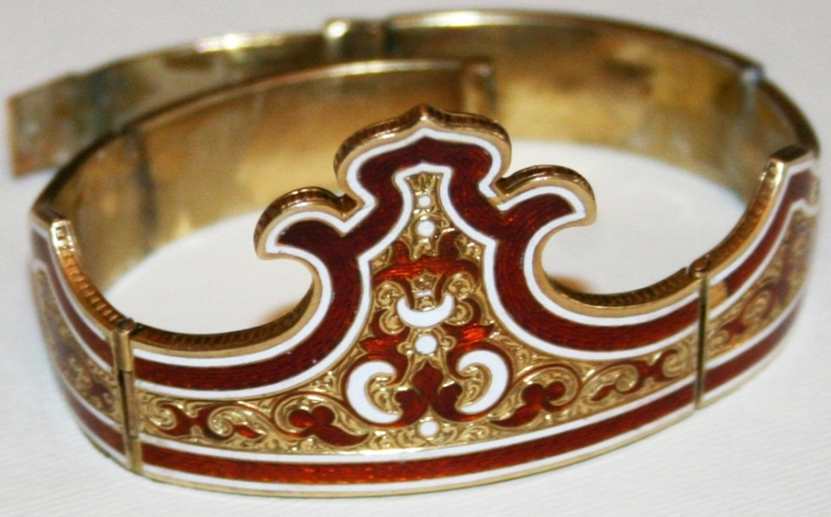
Bracelet of First Lady Elena Cuza, from the collections of the Union Museum in Iaşi
She spent the last years of her life in a modest house in Piatra-Neamţ. She led an austere life and continued her charity work. Every Saturday she gave money to the poor that gathered in front of her house. She used only 20,000 lei from her annual income of 120,000 lei to cover her current expenses and to help the poor, whereas the rest of the money she donated to the hospital in Piatra-Neamţ, to the Public Baths and the “Caritatea” Hospital in Iaşi.
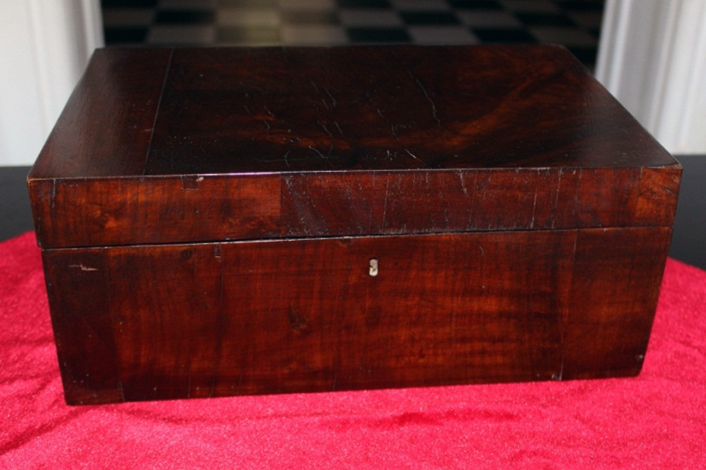
Box of Elena Cuza, from the collections of the memorial house dedicated to Cuza in Galaţi.
Made from veneered wood, the box
is divided into two sections by a piece of wood
padded with green-blue plush, just like the interior of the lid.
Elena Cuza died on 2 April 1909 and was buried at Soleşti alongside her parents. At her request the funeral was modest, the way she had led her life, without the presence of personalities or officials, as it would have been expected, and the service was ensured by only one priest.